Introduction Top
Hi! Xirias here, with a quick Abathur guide focused on helping players grow their skills and have a good time. I'm a nobody from the community, with years of casual RTS and MOBA experience. So, grain of salt with all of this, if you're looking for gospel from the heavens, you won't find it here. If you're looking for some interesting, alternative ideas or maybe some extra guidance, read on!
I wanted to create this guide to talk about playstyles with Abathur that are much more focused on the utility behind Symbiote rather than split-pushing with Locusts. If you watch pro-level play, you'll see aggressive body positioning and Locust Brood being huge in Abathur's kit, allowing him to take merc camps and apply pressure. This guide will talk about none of that. With that in mind, this guide serves a few purposes.
- Beginning Abathurs need to learn a whole new playstyle from the other heroes. By focusing on Symbiote performance and Nest placement, you can build the fundamental skills and map awareness that will help you excel going forwards. These are necessary hallmarks before you start getting more aggressive with body placement and Locust play.
- Intermediate Abathurs may actually enjoy the enhanced map presence of a Symbiote-focused build, especially if you have a Gazlowe or Zagara on your team who can capably handle merc camps. I prefer this playstyle so as to finish games with no deaths, ensuring that I'm able to contribute as frequently and thoroughly as possible.
- Advanced Abathur players who want to experiment a bit or brush up on their Symbiote fundamentals could enjoy a few rounds playing like this to focus on a specific part of Abathur's kit. It's a good exercise.
My hope is that you'll find some interesting points here and enjoy the read. Again, this build will appeal to you if you're wanting to develop better core competencies with Abathur or if you simply don't enjoy Locust play. With this build and a good team, Abathur has the opportunity to lead in hero damage.
Who is Abathur? Top
Abathur is a hero unlike any other in the HotS universe. With a miniscule HP pool and abysmal damage, he is completely defined by his abilities. When playing Abathur, the game transforms into a miniature real-time strategy (RTS) game. With that in mind, solid Abathur players need a different skill set than other heroes, and a high level of familiarity with this game's heroes. We'll talk more about this in a moment, but first some quick pros and cons
Pros
- Unique play styles based on build (Locust, Symbiote Damage, Symbiote Support)
- High skill cap
- Doesn't use mana, skills only rely on cooldown
- Incredible ability to save allies or snipe enemies near death
- Provides incredible map awareness
- Players focused on team synergy can really shine in this role
Cons
- Did I mention the high skill cap?
- Teamwork is a must - solo-queue can be a painful experience sometimes
- The first ten levels can be painful if the enemy team is pushing teamfights, as you'll be responsible for the constant 4v5 engagements
- Improperly assembling your talents can make you remarkably ineffective
I strongly recommend approaching Abathur after you've had some time to familiarize yourself with Heroes of the Storm. The more knowledge you have about the Heroes and Battlegrounds, the better decisions you'll make and the more fun you'll have. After the last account wipe occurred, I've been spending each week leveling the heroes in the free rotations to 5 for the gold gain - I recommend all players try this as it'll help you learn what heroes you'd like to purchase & help you learn the kit of heroes you don't feel you like. I truly don't enjoy playing Illidan, but forcing myself to play those games allows me to use Symbiote and Ultimate Evolution much more capably with an Illidan on the team. As the number of heroes in the game steadily increases, this becomes more and more important, so get out there and try every hero you can.
Let's get to the abilities that make this bizarre hero what he is.
Abathur version 2 (Closed Beta Patch January 13, 2015) Top
So, quite a lot changed in this last patch. I'm not going to talk about the differences in the rest of the guide, as many players will not have experience with the old version of Abathur, but I still wanted to mention some things to consider if you've played some Abathur before January 13th 2015.
 Ultimate Evolution
Ultimate Evolution
Two big new considerations when using this Heroic:
--Your clone, when it dies, gives enemies some EXP. With this in mind, if you don't HAVE to suicide your clone, don't, just let it expire. You'll now have to balance whether it makes more sense for you sacrifice some experience to the enemy team to start the cooldown timer sooner.
--You no longer have access to the cloned target's heroic ability. This is huge! You are no longer the lynch pin for epic wombo combos, double Odin Bloodlust pushes and hilarious Azmodan hordes. Do be aware that, when cloning Xul, you will spawn skeletons, just like you can still summon demons as Azmodan, so while you can't flood the lane like we could before, you can still apply a ton of pressure with piles of summons. It's more important now to assess your team's needs during any particular engagement and pad the team accordingly. If the enemy tanks are down, the additional DPS may not help as much as a second Uther to CC their assassins and heal up your teammates.
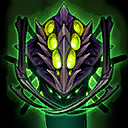 Evolve Monstrosity
Evolve Monstrosity
It's a second heroic ability! Rejoice! And it's an interesting one that reinforces Locust play. I'll discuss this further below.
Also of note here is that the level 20 talents have been completely reworked - you're going to have choices to make instead of just spamming control+1.
Locust talents have been changed up, but we won't be talking about those here. That said,
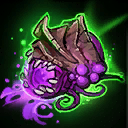 Locust Nest
Locust Nest allows for some great plays and fake-outs.
Symbiote got a few more focused offensive capabilities and some really potent new defensive ones, we'll cover those in the Talent Breakdown below. Some interesting points:
Barbed Spines was rolled into
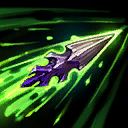 Needlespine
Needlespine, opening an extra talent (level 4) for you to utilize at the cost of having the extra distance granted by
 Needlespine
Needlespine drop from 33% to 20%.
Stab damage took a pretty hefty hit to scaling damage, so it's not quite as barbaric as it used to be (4 points of damage less per level than pre-patch)
With
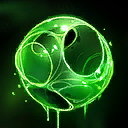 Regenerative Microbes
Regenerative Microbes moved to level 1, you can build some really potent shields and heal-over-times with Carapace. The pushing capabilities of
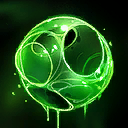 Sustained Carapace
Sustained Carapace and
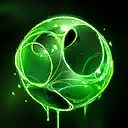 Networked Carapace
Networked Carapace are not to be taken lightly.
So experiment! We'll see how playstyles shift, but you're going to see a wider breadth of Abathur play with the more focused Locust talents and the new variety of offensive/defensive capabilities.
Abathur has had minor buffs/nerfs since this major revision, none of which significantly change the play style we'll be looking at in this guide.
EDIT (2/1/16): OUR STAB DAMAGE IS BACK! In this patch, Stab is getting 5 base damage back (4% scale per level remains the same) and Spike Burst is getting 5 base damage back as well. Stab-based builds are going to have a little more bulk to them, making poking more punishing and Soma Transference more powerful as well when you're building to support melee heroes.
EDIT (7/12/16): Some numbers tweaks and QOL (quality of life) improvements. Tracer is now a valid Symbiote target now that
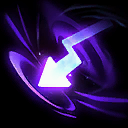 Recall
Recall will not disconnect you from her,
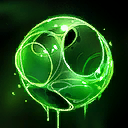 Carapace
Carapace talents received buffs all around, most notably Networked Carapce now shields heroes (untalented, so does not heal) as well as minions. Spacial Efficiency includes a cooldown reduction, making the pick between that and
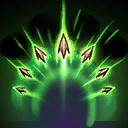 Soma Transference
Soma Transference even tougher. Lastly, there was a huge buff to catapults and ranged minions, raising the threat of minions pushing lanes. With this in mind, applying additional lane pressure is more important than ever, so bear this in mind when choosing your ultimate - a Monstrosity can push like crazy if your team can hold their own in 4.5 v 5 engagements, and you may even drop it to a solid 4.5 v 4 if the enemy team has to send someone to clear the lane away from the objective or teamfight.
EDIT (8/25/17): Haven't updated in a while because no major changes have happened. We recently got a substantial buff to
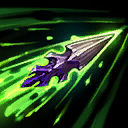 Stab
Stab damage, but otherwise Abathur's strengths and weaknesses remain unchanged. Tons of new heroes with new mechanics have been released, so it is more important than ever to develop at least a cursory knowledge of each hero so you can clone effectively. Heroes like Garrosh and D.Va make incredible symbiotic hosts, especially when building for
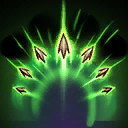 Spike Burst
Spike Burst, to slow enemies and provide even more sustain to your tanks. Higher mobility heroes like Genji allow you to chase effectively and capitalize on the additional DPS of
 Stab
Stab, and cloning a Gul'Dan is downright cruel as you spawn with full mana and can use
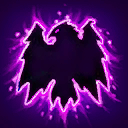 Life Tap
Life Tap to just use all his spells on cooldown for insane value. After the changes to
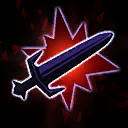 Executioner
Executioner, communicate with your team and keep tabs on their talent choices - if your primary DPS is going with that talent, adding a slow to Spike Burst is huge, as would be selecting a clone target like Jaina who can provide more CC to proc the damage boost from
 Executioner
Executioner. Just keep stabbing, fellow bug hats.
Combat Trait - Locust Strain Top
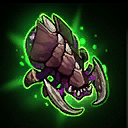
Every twenty seconds, Abathur spawns a Locust that travels to the nearest lane and attacks. When fully utilizing Abathur's kit, these little guys represent the most tactical risk/reward balance concerning body placement. We'll take a closer look at body placement later in the guide. Locusts are a great candidate for Symbiote given their disposability and high HP, especially when you invest some talents in them. In this guide, though, we'll be focusing on Symbiote play. If you spec into a Locust build, expect to be hopping around the map popping
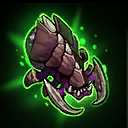 Locust Brood
Locust Brood (syncing up your timing of placement to coincide with your passive Locust spawn), using
 Locust Nest
Locust Nest to throw the enemy team off of your body location and
 Evolve Monstrosity
Evolve Monstrosity to split the enemy team's focus. While not focusing your utility on locusts, be aware that enemy heroes will be tracking the timers on your locusts to approximate your position on the map.
Talents that effect Locusts:
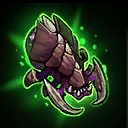 Survival Instincts
Survival Instincts [Level 1] - Locusts increase their HP by 50% & duration by 40%
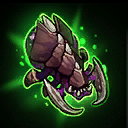 Assault Strain
Assault Strain [Level 13] - Locusts gain cleave (AoE on basic attack) and explode on death
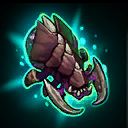 Bombard Strain
Bombard Strain [Level 13] - Locusts gain a ranged attack & damage increase
 Locust Brood
Locust Brood [Level 16] - Gain the ability to spawn 3 Locusts.
 Locust Nest
Locust Nest [Level 20] - Activate to create a nest that periodically spawns Locusts. Only one Locust Nest can be active at a time.
Z - Deep Tunnel Top

Abathur lacks a mount in favor of this ability - after a short charge (can be interrupted by stuns but not damage) Abathur tunnels/teleports to any location on the map where he has vision. This will be your primary form of transportation during the game, allowing you to quickly reposition your body if you're in danger or have your locusts push a different lane. Deep Tunnel has a 30 second cooldown, so make your decisions carefully before you dig. By using Toxic Nests for vision, you can travel almost anywhere on the map, which is a great help if you're split-pushing or planning on taking a mercenary camp quickly, as you can Hearth back to base afterwards. Same goes for taking Dragon Knight - if you can safely dig to the objective to summon him, this ability should be off cooldown when the timer runs out, so you can dig back to a lane and keep the pressure up.
Q - Symbiote Top
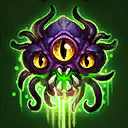
Symbiote is what we're going to focus on in this build, and one of the two core abilities that make Abathur so unique. This is a targeted ability that can be cast on any allied hero, building with ammunition (towers, forts & cores) minion or Mercenary. Please note you cannot target Grave Golems, Plant Terrors or summoned units! Symbiote is also what allows Abathur to control and contest multiple lanes, due to the global cast range and the fact that experience gained around the Symbiote is collected by the team rather than lost. This allows your team to support each other while you collect as much experience as possible to maintain momentum. Is your team contesting a tribute spawn? If they're team-fighting well, then soak experience in an abandoned lane - when you're ahead, get more ahead.
Once cast, Abathur's body becomes immobile and you will infest your target, which opens up your second set of abilities. All abilities used while in Symbiote originate from your host (Stab & Spike Burst emanate from your host, Carapace targets your host). Symbiote has a 4 second cooldown that begins when you disengage with the R key - you can manually halt Symbiote at any time once cast. Each time you cast Symbiote, all of Abathur's abilities are ready to be instantly cast - because of this, it is often wise to disengage and re-engage Symbiote to reset all your cooldowns. This especially effects Stab which starts with 2 or 3 (once talented) charges banked, and disengaging can be even more rewarding if you use
 Sustained Carapace
Sustained Carapace to keep your host shielded while you're on cooldown.
Be aware that you still take damage while this ability is being used, which is why body placement is so important with Abathur. Placing your body aggressively or defensively defines a huge part of his play styles.
Talents that effect Symbiote:
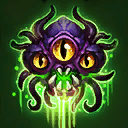 Adrenal Overload
Adrenal Overload [Level 4] - Symbiote host gains 25% increased Attack Speed.
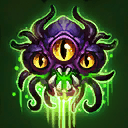 Hivemind
Hivemind [Level 20] - Casting Symbiote creates an additional Symbiote on a nearby allied Hero that mimics the commands of the first, but only does 50% damage/shielding.
W - Toxic Nest Top
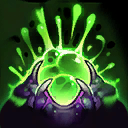
Toxic Nest is Abathur's greatest power for maintaining map awareness during a game. These tiny proximity mines take a moment to activate, but once they do, they grant vision. Nests exist on a timer, and while there's no limit to the number of simultaneous nests on the map, they will expire in time. This is your vision ward, only you don't need to be nearby to place it. And it explodes.
Be aware that Nests do not grant vision on cloaked units or Creep Tumors. Always confirm if the enemy team has cloaked heroes for you to contend with. If they do, use Nests at points where you expect them to try and approach you for the kill, it reveals them for 4 seconds if hit. Ideally, place them close enough to buildings, so if they trip the mine, they'll soak some tower fire while you Deep Tunnel to safety. Similarly, place mines on common rotation paths so if cloaked heroes are trying to pick off your teammates, you'll have a chance to ping their location to stay one step ahead.
You begin with 3 charges (can be increased to 5) of Toxic Nest, which, for most players, is more than adequate due to the 10 seconds it takes to replenish a charge being easily passed during Symbiote infestation. The range is substantial, but requires a talent to make it global. In this build, we won't be taking the global cast-range talent (or any nest talents for that matter), so your body placement will dictate what range of the map you can keep vision on. Use it in frequently traversed paths, on objectives, mercenary camps and in bushes to give your team the information they need to make good decisions and stay alive. Or meme it up and make a giant pile of nests for a Stukov or Garrosh to toss your hapless foes into.
Since you'll be spending most of your time using Symbiote, it is easy to lose track of how many charges of Toxic Nest you have available. Get in the habit of checking that number during those few seconds you are disengaged, and while you're waiting for Symbiote's cooldown to pass. Drop any available nests in key locations on the map while you wait and assess your next Symbiote target. The faster you get at making these decisions, the better informed your team is.
An incredible way to help your team with nests is to use them to clear enemy minions and mercenaries pushing a lane - especially if it allows your team to continue a separate push or engagement. A few nests can do solid damage if placed underneath enemy knights or siege mercenaries. Keep an eye out for these pushes and put out the fire yourself if you can. As an added bonus, you do harvest EXP for minions and mercenaries killed by your nests, but only if the nest damage is what "last hits" them [Thanks to Redditor HMSChurchill for the reminder about this use of nests].
The damage from Toxic Nest isn't game-changing, but you can use it for some solid disruption, by distracting enemies during teamfights or placing them under enemy players trying to capture objectives. It's a rare thing to secure a kill using a nest, but when it happens, it is glorious. If you take
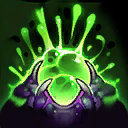 Vile Nest
Vile Nest (which I generally don't recommend for this build due to the necessity of
 Needlespine
Needlespine for Stab builds to be viable), you can use Nests to help your allies escape by placing them on a path your team will likely cross while disengaging.
TLDR: Vision wards that explode.
Talents that effect Toxic Nest:
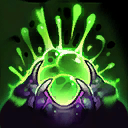 Envenomed Nest
Envenomed Nest [Level 1] - Nests deal 75% extra damage over 3 seconds
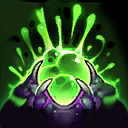 Prolific Dispersal
Prolific Dispersal [Level 4] - Nest charges increased from 3 to 5, reduce cooldown by 2 seconds
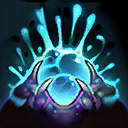 Ballistospores
Ballistospores [Level 4] - Makes Toxic Nest cast range global, increases duration by 25%
 Vile Nest
Vile Nest - [Level 7] Nests slow down enemies by 40% for 2.5 seconds
[Symbiote Ability] Q - Stab Top

This skillshot is on a three second cooldown and is going to be your primary source of damage through a game. The projectile fired has a distinct speed, so practice constantly! Being able to lead your shots will ensure a higher hit rate given the substantial cooldown. Getting used to the two stab ranges (pre- and post-
 Needlespine
Needlespine) will also help you conserve stabs that won't hit, though it's often worth throwing them out to help zone fleeing enemies.
Stab begins the game with 2 charges, which allows you to fire three of them before the cooldown becomes prohibitive. Note that the cooldown is greater than the cooldown from Symbiote, so it is often helpful to disengage Symbiote and re-cast to get all your stacks of Stab back, especially late game.
Stab damage is always defined by Abathur's level and talents, with has no correlate to what unit you're infesting - you can do incredible amounts of damage with this ability while infesting minions, mercenaries and buildings, so keep an eye open for opportunities. Punish enemy heroes trying to clear minion waves at low health, and soften enemy heroes as they travel to make for more favorable engagements for the rest of your team.
Talents that effect Stab:
 Needlespine
Needlespine [Level 7] - Increase Stab range & damage by 20%
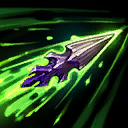 Spatial Efficiency
Spatial Efficiency [Level 13] - Increase Stab charges from 2 to 3, reduce cooldown by 0.5 seconds
[Symbiote Ability] W - Spike Burst Top

Spike Burst is an AoE nova that emanates from Symbiote's host. The 6 second cooldown is notably longer than the cooldown of Symbiote, just like Stab, so disengaging and re-casting Symbiote will allow you additional AoE damage. You can also decrease cooldown with
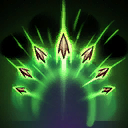 Pressurized Glands
Pressurized Glands.
Spike Burst is helpful when you have multiple targets in close proximity, like any AoE ability is. This makes it excellent at clearning minion waves and merc camps. Interestingly, the range of Spike Burst increases when infesting the Core, unlike Stab which remains static. Alone, the ability is helpful for burst damage but becomes much more versatile if you employ talents that effect it. This can become your focus if you have a strong initiator or chaser on your team - you funnel health into your target with
 Soma Transference
Soma Transference while slowing nearby enemies on a short cooldown. Just wait until you hit twenty for
 Hivemind
Hivemind and it is ON.
Talents that effect Spike Burst:
 Pressurized Glands
Pressurized Glands [Level 1] - Increase range of Spike Burst by 25%, reduce cooldown by 1 second.
 Soma Transference
Soma Transference [Level 13] - Symbiote's Spike Burst heals the host for each enemy Hero hit.
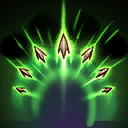 Envenomed Spikes
Envenomed Spikes [Level 16] - Spike Burst slows enemies by 40% for 2 seconds
[Symbiote Ability] E - Carapace Top

Carapace provides a shield for your host that lasts for 8 seconds, with the ability on a 12 second cooldown. With certain talents, this becomes your main support ability during Symbiote. In general, the moment you cast Symbiote you will immediately activate Carapace due to it's long cooldown and, if selected, the heal over time effect.
Correct use of Carapace is directly related to good use of Symbiote in general - you identify a target on your team that is at risk and boost it's health. While the use of Stab will dictate your Symbiote casting on an offensive level, helping your allies escape alive with Carapace is also incredibly important. When fully talented, it provides a shield, heal over time and move-speed increase on an allied hero - an incredible ability. However, be aware that the move-speed increase and healing effects are compromised the moment you disengage your Symbiote.
With the introduction of
 Networked Carapace
Networked Carapace, you could Symbiote a Mercenary and apply a small shield to all nearby units (now including heroes), and with
 Sustained Carapace
Sustained Carapace, disengage after using your offensive abilities and do it again. Serious lane-pushing potential.
Talents that effect Carapace:
 Regenerative Microbes
Regenerative Microbes [Level 1] - Carapace gains a small heal per second effect
 Sustained Carapace
Sustained Carapace [Level 4] - Carapace's shield amount increased by 40% & persists after Symbiote ends.
 Networked Carapace
Networked Carapace [Level 7] - Using Symbiote on a Minion or Mercenary also applies an untalented Carapce to all nearby Heroes, Minions and Mercenaries.
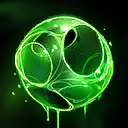 Adrenaline Boost
Adrenaline Boost [Level 16] - Carapace increases the move-speed of host by 40% for 3.5 seconds
[Heroic Ability] R - Ultimate Evolution Top

To the casual player, this ability is a large part of what garners Abathur the difficulty label "Very Hard". When you cast Ultimate Evolution, Abathur's body disappears and an egg appears right next to the target. After a few seconds, the egg hatches as a clone of the targeted hero that you fully control lasting 20 seconds. The clone has all non-heroic abilities and traits of the targeted hero but none of the talents - remember this before you clone a Sgt. Hammer and realize you don't have Hover Mode!
Again, you do not get access to your target's heroic ability.
Ultimate Evolution is what allows your team to finally engage 5v5, and you'll have to choose who to clone based on your team composition, needs of the engagement, and your familiarity with your partner's heroes. The only thing you can prepare for in advance is in knowing as many heroes as possible, so I strongly recommend Abathur players sink in a few games as each hero using the Free Hero rotations. You never want to be in a game where you aren't comfortable with any of the heroes you could clone, you'll severely handicap your team.
When your clone is still an egg, it is vulnerable to enemy attacks. When possible, feel out your team's movements and prep the clone before the engagement begins to avoid taking significant damage before the egg hatches. This will also allow you to position yourself accordingly as well (getting Warriors to the front of team movements or staying off the front lines as a ranged assassin).
After the timer ends or your clone is killed, Abathur reappears where he originally was. Please note that after a patch in early December 2014, the cooldown timer for this ability now begins when your clone dies or the timer expires. As of January 2015, your clone provides the enemy team experience points when killed. These two considerations are important as you'll have to decide if feeding the enemy team a little bonus EXP is worth lowering your cooldown. In general, you'll want to soak as much damage as you can without dying, but always sacrifice the clone if it means saving a teammate.
After a patch on March 24, 2015, Ultimate Evolution clones now gain 20% Ability Power, 20% Attack Damage and 10% Movement speed bonuses over their targets, which makes it much more compelling, though in this build, the split pushing possibility of Evolve Monstrosity somewhat trumps it. Both cool-down and duration were decreased by ten seconds each as well.
Talents that effect Ultimate Evolution:
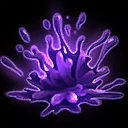 Volatile Mutation
Volatile Mutation [Level 16] - Clones deal AoE damage every 3 seconds and when they die
 Evolutionary Link
Evolutionary Link [Level 20] - As long as your clone is alive, the original target gains a shield that refreshes every 5 seconds.
[Heroic Ability] R - Evolve Monstrosity Top

Finally, Abathur has a second heroic ability. Evolve Monstrosity allows you to permanently transform an allied minion or Locust into a Monstrosity. Monstrosities feed on nearby enemy deaths, gaining health and attack damage, so starting a monstrosity near a large enemy minion push can pay off in spades. If left alone, the Monstrosity will push a lane and grow until it dies.
Where things get interesting is when you cast Symbiote on a Monstrosity - you then gain full control of it. While in control you can cast all your Symbiote abilities normally, which feels a bit disorienting to begin with. You can use this to micromanage positioning and target priority, allowing you to let other lane minions soak damage while the Monstrosity grows. You can also veer it out of lane to support nearby teammates, though I generally don't recommend it, as in a build like this one, your goal is to be in Symbiote on your allied heroes as much as possible.
Remember, to get the most of your monstrosity, you'll want to clear some minion waves, so plan accordingly. This is a great compliment to split-push Abathur plays as your enemy cannot afford to leave you alone when you've got a Monstrosity pushing down a lane on the other side of the map. Knowing when and where to drop a Monstrosity is important and can help split your enemy team up if they tend to deathball around a lot.
Talents that effect Evolve Monstrosity:
 Volatile Mutation
Volatile Mutation [Level 16] - Monstrosities deal AoE damage every 3 seconds and when they die
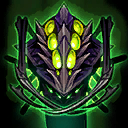 Evolution Complete
Evolution Complete [Level 20] - Monstrosity duration increased by 50%, gains access to Deep Tunnel ability.
G - Ping (Your most important ability) Top
Communication! You know how Tychus keeps calling the player an "armchair general"? That's you. You're the general. If you're comfortable enough with the game as a whole to play Abathur, you should be familiar with the smart ping system, but just in case you're not, we have to talk about it.
If you press G, you can click on any target and a context-sensitive message will appear for your team. If you click on a mercenary camp, a ping will appear on the minimap at their location along with the message that Abathur wants to take the mercenary camp. If you press G and click on a building, it will say ping and say you want to defend that building. If you click on an enemy hero, the team will get a message that you want to target that hero. The system also works for entering the mines, capturing a shrine or turning in dubloons - just ping what you want your team to do. If you click anywhere else, the minimap will ping, but no message will be displayed, so you better tell your team what you're aiming for.
Where this gets even more powerful is if you hit G, then click and drag. You'll see your four other communication options - Danger, Retreat, On My Way and Assist Me. These are great, fast ways to communicate to your team if you see opportunities or dangers. Also be aware that you can quickly send a Retreat ping using the V key.
Your body is almost never in danger as Abathur, so you owe it to your team to help them as much as you can - let them know where danger is, where opportunities are, and when objectives are up. More than any other hero, you can keep an eye on the respawn timers on mercenary camps, and alert your team (also tell them "our knights up in 15") to make sure you're in optimal position for maintaining or gaining map control. As your game sense increases, remind your teammates of which merc camps are likely to be under immediate contestation by the enemy team. Try to ping expected pathing routes of enemy heroes you see walk into the fog of war if they may be approaching an objective or lane to keep your teammates safe and informed - they're gonna be busy with their micro, so allow them to excel by giving them the awareness they may be sacrificing in order to focus on their game.
I can't emphasize this enough: Ping is part of Abathur's kit. You have to use it, you have to communicate, or you'll be letting your team down. And I hope it doesn't need to be said, but don't Ping spam. Don't be that guy. No one likes that guy. Be concise, direct and proactive. Evolve.
Additional builds Top
As Abathur has changed over time, some flexibility has appeared in his builds. Just wanted to make a moment and look at the alternate builds at the top of this guide.
Sustain and Support
This build is focused on mixing Stab damage with the utility of Carapace. Taking
 Sustained Carapace
Sustained Carapace will change your tempo when using Symbiote by focusing on spamming all your abilities while they're available, and then immediately disconnecting from your host - Carapace will continue to shield and heal (heal only effects the primary target, so pick wisely) while Symbiote's cooldown refreshes. It's more frenetic but allows you to heal and shield more of your teammates, focusing on small bursts of sustainability and damage rather than sticking on a single target. Selecting an heroic ability in this build is up to you, based on your team's composition and competencies - if they can team fight capably with your added Stab damage and shielding, you can really push lanes with Monstrosity. If the enemy team has a very strong team fighting presence, going Ultimate Evolution is valuable, and you can significantly boost your ally's survivability with
 Evolutionary Link
Evolutionary Link. After recent changes,
 Networked Carapace
Networked Carapace is more viable than ever, as you can now target Heroes and still get the benefit of Carapace effecting nearby mercs and minions - if your team is already over-the-top with damage, this is a valid talent alteration to push lanes harder.
Protect the diver
This build is a re-route of your talent selections for team compositions where you have one or more hard engaging allies. Your first two talent selections are the same, focusing on supporting your team and increasing damage output. However, instead of building for Stab damage, we're going to focus on the added sustain of
 Soma Transference
Soma Transference. If you have one or more allies who can really commit to face-diving the enemy team (like Illidan, Leoric, Butcher, Thrall, etc.) it should be easy to hit two or more heroes with Spike Burst to increase Soma Transference's heal, especially with the larger footprint and lower cooldown. If you're on a map where M.U.L.E is valuable, feel free to use it as recommended in the build, but if not, go ahead and add Stab damage at level 7 to make your Symbiote host even more terrifying. The goal in this build is to utilize the lower cooldown & increased radius from
 Pressurized Glands
Pressurized Glands to maximize the healing from
 Soma Transference
Soma Transference and have a huge CC presence with
 Envenomed Spikes
Envenomed Spikes. When you get
 Hivemind
Hivemind in on the action, you can slow just about the entire enemy team and heal two allies simultaneously. All while your MULE can happily repair your buildings - not bad at all.
Talent Overview Top
In this build, we're heavily focusing on Symbiote utility, decision quality and map awareness. While body placement for Locust usage is still important, we won't be acquiring any Locust-based talents - instead, we'll focus heavily on the use of Symbiote to punish enemies and keep your team alive.
Tier 1
 Pressurized Glands
Pressurized Glands [Spike Burst] -
Increase range and decrease cooldown of Spike Burst
Recommended talent. This allows for larger AoE damage and shorter cooldown. It's a small change, but that one-second decrease in cooldown allows you to stagger damage when in Symbiote, allowing for more sustained damage per connection. This does wonders when paired with
 Envenomed Spikes
Envenomed Spikes. If your team really lacks heals, scope out Regenerative Microbes, otherwise this is gonna be your jam.
 Survival Instincts
Survival Instincts [Locust] -
Locusts gain 50% bonus HP & 40% duration
We're not going Locust focus, so skip this for now.
 Regenerative Microbes
Regenerative Microbes [Carapace] -
Carapace heals the target over time
This talent is really powerful when your team is light on other healers. The heal itself is small but scales, and can help your solo-laners commit longer. It triggers simultaneously with Carapace's shield, allowing the healing to occur underneath incoming damage. Later into the game, it has excellent synergy with
 Adrenaline Boost
Adrenaline Boost, helping your allies survive while escaping or chasing. Also very helpful for saving an ally who would otherwise die from damage over time. For early Abathur players, taking this talent can help you remember to focus on team survivability - it can often be more valuable to keep a teammate alive than securing a kill. Communicate with your team members as well, as this heal is effected by
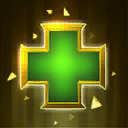 Amplified Healing
Amplified Healing. If I've got a healer on the team, I'll pass over this talent to really focus on direct damage. If you're going to be the team's healer/support, then you'll have to deviate from this build.
 Envenomed Nest
Envenomed Nest [Toxic Nest] -
Nests deal 75% bonus damage over 3 seconds
Not my favorite here, given that Nest damage is unremarkable. We're steering clear of Nest-based talents to focus on their value as aids to vision and as disruptive tool. The goal is to spend as little time disconnected from other players to maximize damage and utility from Symbiote.
Tier 2
 Prolific Dispersal
Prolific Dispersal [Toxic Nest] -
Increase Toxic Nest charges from 3 to 5, reduces cool-down by 2 seconds
I really don't like this talent. In order to maximize damage, you'll manually disengage from Symbiote, and during that four second cooldown, you should be dropping nests. In
very rare circumstances should you actually spend more than a few seconds with all three charges up. Ignore.
 Ballistospores
Ballistospores [Toxic Nest] -
Nests gain a global cast range, adds 25% to duration
A very map-specific talent. The bonus utility of having vision map-wide is great for beginning Abathur players, but you can achieve a similar effect by repositioning your body. On Dragon Knight, never take this, the map is far too small. On Cursed Hollow, however, it can help you gain vision on all the Tribute spawn points, which is a neat benefit. You'll often see this talent used in cheesy locust builds to backdoor keeps - we're not doing anything like that here. Since body positioning (even in safe locations) can replicate this ability, I don't recommend choosing it.
 Sustained Carapace
Sustained Carapace [Carapace] -
Increase Carapace shield by 40%, allows it to persist after Symbiote ends
This is an incredible talent, and my recommended choice if you're focusing more on defense than offense. Many times early-game you'll Symbiote a unit to cause some damage and hit some serious downtime while you wait for Stab to recharge but you don't want to disengage because of Carapace's heal or shields. With this talent, you can fire off Carapace, do your damage, then disengage to more quickly reset your cooldowns without sacrificing the defensive benefits of Carapace. Definitely recommended if your team is focused on ability damage rather than auto-attack damage.
 Adrenal Overload
Adrenal Overload [Symbiote] -
Increase target's attack speed by 25%
Recommended talent. Sheer sustained damage output for your host. Drop this on a ranged assassin and laugh. Symbiote a Tychus with
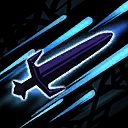 Master Assassin
Master Assassin and you won't believe the attack speeds. Connect to Kharazim and watch the healing flow. Pair this with
 Adrenaline Boost
Adrenaline Boost for a mini-Bloodlust every few seconds. If you're worried about a lot of non-lethal poke damage from the other team (focusing on sustain for your allies), go with
 Sustained Carapace
Sustained Carapace. Choose this one to bring the ******* pain.
Tier 3
 Needlespine
Needlespine [Stab] -
Increase Stab range & damage by 20%
Recommended talent. Are you building for stab damage? We are! There are only two talents that directly effect stab and this is one of them. Fun fact, prior to January 2015 the two components of this talent (damage and range) were two separate talents. This talent tier has some great options, but for pure damage output, this is it.
 Vile Nest
Vile Nest [Toxic Nest] -
Nests slow enemies by 40% for 2.5 seconds
A great support ability, but outclassed by Needlespine. My most compelling use-case for this is Nesting the road behind your team during an engage so that if they have to fall back, the enemies will get slowed while chasing, aiding in their escape. Offensively, you could set up mines in the retreat paths of over-extended enemies or objective entrance/exits on certain maps. Outside of that, not really recommended.
 Networked Carapace
Networked Carapace [Carapace] -
Use Carapace on any unit to also apply an untalented Carapace to all nearby Heroes, Minions and Mercenaries
Really solid lane-pushing talent. If you like to sneak up on enemy heroes by Symbioting minions, this can be a downright nasty surprise. While it won't allow you to directly cause extra damage with Stab, you'll shield (and heal just the primary host, if talented) a large number of units to keep the pressure up. I have a feeling we'll be seeing a lot of this talent on Locust-focused builds.
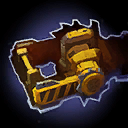 Calldown: MULE
Calldown: MULE [Active Ability] -
Activate to summon a Mule that repairs structures for 60 seconds (also restores ammo)
This is a very situational ability. I generally don't recommend it on Blackheart's Bay, but it can be helpful to keep your buildings intact if you manage to keep them from falling. As another active ability that cannot be accessed during Symbiote, I tend to pass on this. As always, though, stay alert and stay responsive - there will definitely be games where this talent is the right choice.
Tier 4
 Ultimate Evolution
Ultimate Evolution -
Clone target allied hero and control it for 20 seconds.
We discussed this ability earlier. The entire justification for taking this over Evolve Monstrosity is due to the value of the ability during teamfights. If the enemy team is often moving in a five-man cluster, having your team be a man down during those engagements, even with strong Symbiote usage, can be painful. Remember to pick your target based on their core abilities and trait as you will not receive their talents nor heroic ability. You will, however, receive a flat 20% bonus to attack damage and ability power, along with a 10% movement speed buff. Decide if your team would benefit from another meat shield, more damage or crowd control and heals, clone accordingly. Of note, you can heavily push a lane by cloning Zagara, Xul or Azmodan, as you can spawn additional roaches, skeletons and demons. Gul'dan is a surprisingly good target as your limited lifespan means you can Life Tap constantly to do terrible damage.
With the recent changes to this ability, it's tough to choose between the two, I'd recommend picking whichever complements your playstyle best and suits your enemies. If the enemy team tends to 5-man constantly and not split up, this choice is a must. if they tend to spread out, the Monstrosity will allow you to continue moving your focus around the map while passively pushing a lane. Adapt.
 Evolve Monstrosity
Evolve Monstrosity -
Turn an allied Minion or Locust into a Monstrosity.
This is a tough choice for the following reason - while Ultimate Evolution balances teamfights to 5v5's, Evolve Monstrosity allows you to break up the enemy team or force them to sacrifice buildings. If they split more than one hero off to shut you down, your team can engage with a numerical advantage. I recommend getting used to this talent and trying it out, but even with the brutal power you're building with Symbiote-based abilities, that extra body can make a world of difference. As of the February 10, 2015 patch, Monstrosities now scale harder with kills and with levels & have a 50% damage reduction from Minions and Structures, which will make it more important for the enemy team to have a hero branch off and focus it down. After the March 24th patch, they lost their timed life status and are permanent until killed. With the buff to ranged minions and Catapults in the July 12th 2016 patch, pushing an abandoned lane can now be game-changing.
When placing a Monstrosity, aim for positions in lanes where it will have some time to feed before it hits buildings. The extra HP and attack damage will help it contribute more substantively. And do keep an eye on it, Symbioting it to reposition it or change it's primary target. If you took
 Regenerative Microbes
Regenerative Microbes you can also heal it quite a bit. Remember, however, that nurturing your Monstrosity is always a lower priority than keeping tabs on your teammates. Your timing is key as well - drop the Monstrosity when you foresee an objective or team fight coming up in about 30 seconds. This gives your Monstrosity time to scale and become a palpable threat right when your team can contest an objective or force a fight.
Tier 5
 Assault Strain
Assault Strain [Locust] -
Locust auto-attack cleaves, explode on death
Great locust buff if you took Survival Instincts to make your locusts great in a brawl. Especially powerful now that keeping ranged minions alive causes significantly more siege damage to buildings. Not using this one in this build.
 Bombard Strain
Bombard Strain [Locust] -
Locusts gain a ranged siege attack
More and more feedback from the community that this isn't an ideal talent. Even in a Locust build, your Locusts should be soaking tower ammo and helping minion waves push farther, which is tough if they're not front and centre. Not recommended.
 Spatial Efficiency
Spatial Efficiency [Stab] -
Increase Stab charges from 2 to 3, reduce Stab cooldown.
Recommended talent. This talent is so powerful, there's no real discussion necessary for this build. The additional damage from an additional charge is so much more impressive than this talent first looks. As soon as you cast Stab once, a new stack begins to recharge, making it available almost immediately after casting your third Stab, letting you burst four Stabs in a row. In the section for Symbiote Targeting below, I'll go over what this kind of Stab tempo will look like in practice. When focusing down a hero or chasing, this talent is an absolute no-brainer.
 Soma Transference
Soma Transference [Spike Burst] -
Spike Burst heals per enemy hero hit
This is a solid talent for teamfighting, just remember that it only processes the heal if you hit enemy heroes. If you build around Spike Burst rather than Stab, it's helpful, even more so if you have some strong bruisers on your team. In this build, I still recommend
 Spatial Efficiency
Spatial Efficiency simply due to the incredible increase in damage you get. The exception to this would be if you find yourself primarily targeting a strong dive, melee hero as your Symbiote host, in which case the extra survivability can be very valuable. This alternate choice is significant, so pay attention to your team composition and your own behaviors to make the decision.
Tier 6
 Envenomed Spikes
Envenomed Spikes [Spike Burst] -
Spike Burst slows enemies by 40% for 2 seconds
Recommended talent. This tier really represents some important choices in how you play Abathur. Since we're steering clear of Locust play in this build, that leaves this talent and Adrenaline Boost. Both talents effect movement speed (ally vs. enemy) in different ways, and the choice is based on how you choose to play. If you have an offensive focus, this talent allows you to apply a slow to multiple enemies, which can really punish enemy teams. However, if you miss, the effect is completely wasted. High risk, high reward. This talent really goes nuts once you gain
 Hivemind
Hivemind, even moreso if you have allies with
 Executioner
Executioner.
 Adrenaline Boost
Adrenaline Boost [Carapace] -
Carapace increases target's movement speed by 40% for 3.5 seconds
Up until very recently, this was my recommended talent.. By increasing your host's movement speed, you can help heroes chase or flee effectively, and the effect lasts for 50% longer than Envenomed Spikes. If you have really aggressive ranged assassins, this may be more helpful than
 Envenomed Spikes
Envenomed Spikes, you'll have to make that call based on your teammates.
 Locust Brood
Locust Brood [Active Ability] -
Spawn 3 Locusts (very short casting range)
An incredibly powerful ability that completely changes your play-style. We're not taking this in this build, but you'll see a lot of it in higher-level play. To get the most of it, an Abathur player will be placing their body in hidden, forward positions and using the extra locusts to take Mercenary camps solo or absolutely wreck structures. In order to really focus on Symbiote play, we won't be taking this, instead focusing on maximizing your effectiveness with Symbiote and Nest placement for map awareness.
 Volatile Mutation
Volatile Mutation [Heroic Abilities] -
Clones and Monstrosities deal AoE damage every 3 seconds.
A talent that effects your heroic ability summons. This is especially effective if you have a Monstrosity pushing a lane. We're bypassing this talent in exchange for talents that fire off significantly more frequently to increase your teamfighting capabilities. On a three-lane map you could do some serious damage with this.
Tier 7
 Evolutionary Link
Evolutionary Link [Ultimate Evolution] -
As long as the Ultimate Evolution is alive, the original target of the clone gains a Shield equal to 25% of their health every 5 seconds
Adds an absolutely astounding amount of sustain to your Ultimate Evolution target. Works best on tankier heroes for the larger shields, and especially those who can initiate for your team.
 Evolution Complete
Evolution Complete [Evolve Monstrosity] -
Monstrosity gains the Deep Tunnel ability
The Deep Tunnel ability also means that if you create a big enough threat to pull the enemy heroes over to you, you can then change lanes and make them react. While a fun idea, by level 20, you may have some enemy keeps down and be more engaged in teamfights, which leads us to the recommended talent at this tier.
 Hivemind
Hivemind [Symbiote] -
Casting Symbiote creates an additional Symbiote on a nearby allied Hero
Recommended talent. If you Symbiote a minion with a lone hero nearby, that will lock a Symbiote on both your primary host and the hero. In this mode, Stabs go from both hosts towards where you click. This essentially multiplies your damage output by 1.5, and the slow from Spike Burst that's been augmented with
 Envenomed Spikes
Envenomed Spikes and
 Pressurized Glands
Pressurized Glands covers a huge area every 5 seconds.
Once you take this talent, you have a new variable to consider in selecting and maintaining Symbiote targets - the second Symbiote will vanish if the two hosts stray too far from each other. Let your team know this detail and do your best to target hosts that will likely stick together.
 Locust Nest
Locust Nest [Locust] -
Activate to create a nest that periodically spawns Locusts.
We're not going Locust focus, but if you did, this allows for some amazing fake-outs, throwing the enemy team off if they try to zero in on your position based on your Locust spawn timers. Or allows you to win harder if you're aggressively placed and pushing with
 Locust Brood
Locust Brood.
Playstyle - Body & Nest Placement Top
Now that we finally have all that out of the way, let's get to the three major focuses of Abathur play in this build.
Body placement is the first fundamental we'll look at. Your goals with body placement are:
- Minimize death - your goal is to go zero deaths every game. By not dying, you won't have downtime that you can't Symbiote your teammates. You need to be alive and present during the entire match.
- Maximize Locust utility - your locusts have a timed life, which means they can only run so far down a lane. If you're too far back, too conservatively located, your locusts won't live long enough to make it to the front lines.
- Maximize map awareness - since we aren't taking Ballistospores for global Nest placement, it's important that you place your body where you can place Nests in the most helpful places.
As soon as the game begins, you'll be moving your body to one of your forward forts so your locusts can push your enemy's forward forts. When choosing a lane, first consider how safe each forward fort is - your best choices are forts that have fewer ways to access it. After you've picked a fort, either position yourself right next to the fort (so any player trying to dive on you will be in range of as many damage-dealing buildings as possible) or in a nook (place where enemy heroes would have to fight through buildings to get access to you. With this safe body placement, be aware that your body will not be soaking experience unless enemy minions get all the way to your gate. Because of this, you're best served if there's one other person in-lane with you to soak experience and serve as a primary Symbiote target. If this isn't possible with your team composition, you may have to position more aggressively to get your body in range, a risk we're not taking in this guide in order to more reliably maintain 100% uptime.
After you've picked an opening position where your body will be safe, drop some nests to provide vision. You can focus nest placement in the grass if your enemies utilize that form of cover regularly or just outside of your lanes so you can see when an enemy is preparing for a gank. After you've secured vision in locations like these, you can branch out to objectives, placing nests by Mercenary camps, Tribute spawn points, the Dragon Shrines, Dubloon camps, etc. Frequently used footpaths are great candidates too, so you can track enemy movement in the jungle. Does the enemy team have cloaked heroes? Drop some nests near your body to expose them so the towers can hit them - bonus points if you catch them early enough to Deep Tunnel to safety.
As the game progresses, you'll need to move your body to make sure your locusts aren't being wasted. For this conservative build, you'll likely jump between forward forts. Always pick a fort where you can stay safe (has the most intact buildings), and if there are multiple choices, pick the lane where the enemies still have a forward fort for your locusts to attack. Once all your forward forts are down, you'll retreat to the main base and select the best defended lane the enemy has, so your locusts can still contribute. By late game, your locusts may be a bit of an afterthought, as they won't reach too far. Again, in this build, this is a missed opportunity, but we're focusing on other parts of your game. Eventually, you'll place your body more aggressively to soak lane EXP or to let your locusts reach keeps, but let that map awareness come after you've mastered the other fundamentals.
Playstyle - Ultimate Evolution Targets Top
The use of this ability is independent from any specific build of Abathur - whether you're running Locusts or Symbiote, this ability is unchanged. When cloning your ally, you need to just use your judgement - generally, adding DPS will be a solid bet, so cloning Raynor, Valla or other ranged assassins will be helpful. If you think your team needs some extra tankiness, clone their Warriors. Remember that your clones will NOT have any of the Talents selected by your teammates (nor their heroic ability), so you'll be relying on their core abilities, boosted stats (20% to attack damage & ability power, 10% move speed) and trait. There aren't really hard and fast rules for selecting your clone target, but if you can, notice if the enemy team has any heroes down (adapt accordingly) or if any heroes are out of position, and will not likely get to the teamfight right away.
Clones are invaluable when spawned a few seconds before teamfights begin - you won't take any damage when your egg is on the field. Now that killing clones gives the enemy team EXP, you'll want to make sure that you don't waste a big chunk of health by spawning in the middle of the fight.
This ability is another reason why it's so essential you spend time playing every hero in the game. Knowing to clone Tychus so you can use his trait to melt down tanks, Gul'dan to be able to Life Tap and spam abilities, Xul to provide extra skeletons and drop enemy attack speed, or Uther for immediate healing and stuns - your knowledge and ability to read situations is paramount. Of note, never clone a Viking - you only get one of them.
Playstyle - Symbiote Targets (The Big One) Top
Alright, this is the meat and potatoes of the guide, which is why I put it last. Choosing your Symbiote target is half the battle - the other half is how you chain your abilities together to do the most damage to your enemies.
When selecting a target, you're on the lookout for a few specific opportunities:
- A friendly hero about to lose or flee an engagement.
- An enemy hero about to lose or flee an engagement.
- A friendly hero soloing a mercenary camp.
- An enemy hero with low health clearing a minion wave or killing your mercenaries.
Friendly hero about to lose or flee an engagement
Always be listening to your team, watching for pings and keeping an eye on the minimap. Keeping an ally alive is incredibly important for maintaining a solid map presence and denying your enemy experience. If you notice a skirmish where your allies are likely to lose, do what you can to keep them alive. Sometimes this will mean attaching Symbiote to a nearby minion or allied hero to focus damage on the attackers, but most frequently it's best to target the injured ally. When you attach, immediately spam all your abilities, aiming Stab at the closest or most injured aggressor. The shield can give your ally the ability to survive, and any enemy who tries to chase will take continued damage as you use your remaining Stab charges. If they're near death, keep Symbiote intact until the shield runs out before disconnecting, or until you're certain they're out of immediate danger. Target selection is key, and by using Stab to punish those in pursuit, you'll force them to break off or risk getting taken down themselves. When your talents are in place, the extra damage from Stab and the increased movement speed from Carapace (if you took
 Adrenaline Boost
Adrenaline Boost) will greatly increase your ally's survivability. If you went with
 Envenomed Spikes
Envenomed Spikes be careful to not waste Spike Burst unless you know it'll connect with the aggressor to open a gap between them and your host.
An enemy hero about to lose or flee an engagement
In similar situations of team combat, if your allies are in good shape and the enemy is preparing to retreat, target your best chaser - Valla, Zeratul or Illidan, for example. The goal is to use Spike Burst to slow down the victim to get you in range for further Stabs and Spike Bursts. You can use Stab across walls on maps like Garden of Terror and to reveal enemies trying to flee through bushes. Lead your target, try to predict where they're likely to turn, and keep the damage up to finish them off.
A friendly hero soloing a mercenary camp
Your allies may be able to take mercenary camps earlier than your enemies due to the extra DPS and HP from Symbiote. You can do a great deal of extra damage to mercenary camps, which gives you a sizable tactical advantage early on. You'll only be supporting a hero soloing a camp if there are no other major engagements in progress, though, as preventing deaths is still your first priority.
An enemy hero with low health clearing a minion wave or killing your mercenaries
As Abathur, you have a unique ability to punish sloppy play from your opponents. If you notice an enemy hero cleaning out a mercenary camp of yours or cleaning out waves with low health, Symbiote a friendly target and tear them to shreds. You can use Carapace to keep your host alive longer, Spike Burst to clear the rabble out of the way, and kill them with Stab. Always look for enemies out of position and low on health, as this ostensibly is a free kill for your team. In the instance that no other engagements are happening, while you may not be able to kill them outright, you can do a truly remarkable amount of damage to an enemy hero like this (take an Illidan to half health while he kills a few Siege Mercenaries).
All things being equal, here are some other tips for choosing Symbiote targets:
- If you Symbiote a cloaked hero, do not attack until they break cloak - you'll telegraph their position and put them at risk. Let them make the call, empower their decision-making.
- Generally speaking, you'll want to Symbiote targets with higher health rather than less health to ensure you can fire off the maximum number of your abilities.
- Always try to Symbiote targets that will be on the front lines - Warriors and Melee Assassins are great candidates, followed by Melee Supports/Specialist and finally ranged heroes. If you have an aggressive ranged hero who can hold their own, they're also a solid choice.
- With the addition of
 Adrenal Overload you have even more to consider when supporting a team fight. Instead of targeting your highest health warrior, perhaps giving Valla or Sgt. Hammer a 25% boost to attack speed would be more beneficial. Dropping Symbiote on The Butcher with bonus attack speed can be devilishly rewarding.
Adrenal Overload you have even more to consider when supporting a team fight. Instead of targeting your highest health warrior, perhaps giving Valla or Sgt. Hammer a 25% boost to attack speed would be more beneficial. Dropping Symbiote on The Butcher with bonus attack speed can be devilishly rewarding.
- If you're solo-laning, you may need to use some Nests to help melt through minion waves. If you're pushing your own lane, try to Symbiote your Locust for maximum utility, or Footmen in a remote lane. Also remember to keep an eye on your EXP collection radius, you may have to position your body a bit more forward than normal to harvest all the minion deaths.
- Keeping your allies alive almost always trumps securing one extra kill.
- Watch your teamfights to find out who your enemy is focusing on - if they're going after specific heroes, help them survive longer.
- Learn the timings of your Symbiote abilities. For example, after you get your third charge of Stab, as soon as you infest your host, you spam all abilities (QWE), then can stab 3 more times after you hit level 13 (QQQ), wait one second and Spike Burst/Stab (WQ), then disconnect. So, QWE, Q, Q, Q, WQR to maximize your damage and disconnect at a time when your 4-second cooldown from Symbiote will be shorter than waiting for your other abilities to charge. Earlier game, your cadence will be slower since you only have two charges.
- While your goal is to be a global presence on the map, it is sometimes unavoidable to spend a protracted amount of time Symbioting a single hero to keep them alive. Remember that if the shield from Carapace has been destroyed, you may do more good to disconnect and reconnect to your host to refresh all your cooldowns.
- Even if Carapace is somehow still active, if all your abilities have a 3+ second cooldown, bail out of your target unless it is guaranteed they will die within 4 seconds. Instead of getting some of your abilities in three seconds, you'll get all of them (and your Stab charges) in 4. Worth it.
Conclusion Top
That's pretty much it. This build is all about paying it forward since you'll likely be safe for most of (or ideally, all of) the game. Communicate well with your team, inform them of opportunities, save them when they're losing and help them when they're chasing. Focus fire on targets where you can do the most damage and maintain map control through the vision you get from nests. Try to predict teamfights so you can get your clones ready to contribute as much as you can or spawn a Monstrosity on the opposite side of the map to apply pressure and force the enemy team to react. Keep your body positioned in safe places, ideally where you can get bonus utility from your locusts.
The last message I may have for you is to tell your team how Abathur works. When the match starts, let them know where you're positioning your body and tell them to ping if they need help. Let them know that it can take up to 5 seconds for you to switch Symbiote hosts, but you'll support them as best you can. A good Abathur can make or break a match, as the best kinds of Abathur play can make a team out of five people solo-queueing.
EDIT (11/2/14): Switched primary recommendation from
 Regenerative Microbes
Regenerative Microbes to
 Needlespine
Needlespine - while the altered play focus to support/survival is hugely valuable, that seems to be the exception rather than the rule.
EDIT (1/17/15): Significant alterations to accommodate rework from Closed Beta launch patch.
EDIT (3/27/15): Minor changes to address the alterations to Abathur's Toxic Nest talents and heroic abilities from the March 24, 2015 patch.
EDIT (2/1/16): Added a note regarding balance change increasing Stab and Spike Burst starting damage.
![]()









Quick Comment (8) View Comments
You need to log in before commenting.